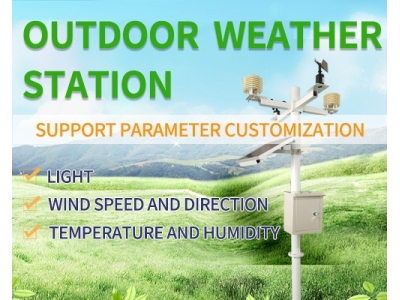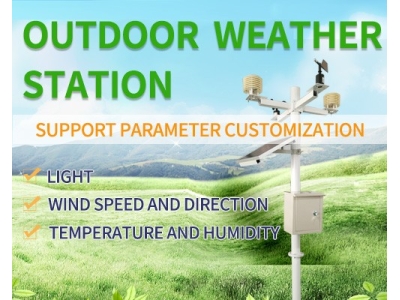In the world of agriculture, weather plays a critical role in determining crop health and yield. Too much rain or too little can have a significant impact on plant growth, while extreme temperatures can cause damage or even kill crops. That's why farmers rely on weather stations to provide real-time data on weather conditions, which can be used to manage crop health and optimize yields.

One of the key benefits of using a weather station to manage crop health is the ability to adjust irrigation schedules based on changing weather conditions. For example, if a weather station detects that it has rained recently, farmers can delay watering until the soil has dried out. This can help to prevent overwatering, which can lead to root rot and other issues that can damage crops.
Weather stations can also help farmers to plan their irrigation schedules in advance. By analyzing historical weather data, farmers can determine the best times to water their crops based on the expected weather conditions. This can help to ensure that crops receive enough water without wasting resources.
In addition to optimizing watering schedules, weather stations can also help to detect and respond to other issues that can impact crop health and yield. For example, if a weather station detects that temperatures are likely to drop below freezing, farmers can take steps to protect their crops, such as covering them with blankets or using heaters to keep them warm. Similarly, if a weather station detects that there is too much humidity in the air, farmers can take steps to prevent fungal growth and other issues that can damage crops.
Another important tool for managing crop health and yield is soil sensors. These devices can be installed in the soil to measure moisture levels, nutrient levels, and other factors that can impact plant growth. By combining data from weather stations and soil sensors, farmers can get a more complete picture of their crops' health and adjust their management practices accordingly.
Overall, using a weather station to manage crop health and yield is a crucial tool for modern agriculture. By providing real-time data on weather conditions, farmers can optimize their irrigation schedules, prevent crop damage, and increase yields. Combined with soil sensors and other tools, weather stations can help farmers to produce healthier, more productive crops while conserving resources and reducing waste. As we continue to develop and refine these technologies, we can look forward to a more sustainable and productive future for agriculture.






